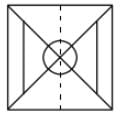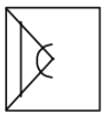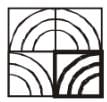DSE Odisha TGT Science PCM Mock Test - 2 - OTET MCQ
30 Questions MCQ Test DSE Odisha TGT Mock Test Series 2025 - DSE Odisha TGT Science PCM Mock Test - 2
Which sport is associated with the term "home run"?
The Northern Plains are primarily formed by the alluvial sediments carried by which rivers?
Which state is known for being the largest producer of rice in India?
Who became the first Indian male to win an individual gold medal at the Asian Games?
What is the significance of the Tropic of Cancer in relation to India?
Odisha is the third largest produce of ...............
Direction: If a Paper (Transparent Sheet) is folded in a manner and a design or pattern is drawn. When unfolded this paper appears as given below in the answer figure. Choose the correct answer figure given below.
If the following pattern is drawn in a transparent square sheet and folded along the dotted lines, how does it appear?
Question Figure

Answer figure

Which answer figure will complete the pattern in the question figure?

Directions: Each of the following consists of a question and two statements numbered I and II given below it. You have to decide whether the data provided in the statements are sufficient to answer the question.
Which statement is required to derive the conclusion - 'No Player is a Champion'?
Statement I: All Stars are Goalkeepers.
Statement II: No Champion is a Player.
A computer cannot “boot” if it does not have the
Which is the place where the child's 'cognitive' development is defined in the best way?
The instructions provided by the teacher must be based on a child's
A double convex lens made of glass of refractive index 1.56 has both radii of curvature of magnitude 20cm. If an object is placed at a distance of 10cm from this lens, the position of the image formed is
It is necessary to use satellites for long distance TV transmission because
The direction of propagation of an electromagnetic plane wave is
An electric bulb is rated 220 V and 100 W. Power consumed by it operated on 110 V is
The first use of quantum theory to explain the structure of atom was made by :
The light radiations with discrete quantities of energy are called ___________ .
Which is not anomalous pair of elements in the Medeleeves periodic table -
Which of the following carbohydrates are branched polymer of glucose?
lf En = total energy, Kn = kinetic energy, Vn = potential energy and rn = radius of the nth orbit, then based on Bohr’s theory, match the parameter in Column I with the values in Column II.
Given ΔH for the process Li(g) → Li+3(g) + 3e- is 19800 kJ/mole & IE1 for Li is 520 then IE2 & IE3 of Li+ are respectively (approx, value) :
Calculate the Gibbs free energy for the reaction of conversion of ATP into ADP at 293 Kelvin the change in enthalpy is 19.07 Kcal and the change in entropy is 90 cal per Kelvin.
Only One Option Correct Type
This section contains multiple choice questions. Each question has four choices (a), (b), (c) and (d), out of which ONLY ONE is correct.
Q.
Cl2 gas is passed into a solution containing KF, Kl and KBr, and CHCI3 is added. There is a colour in CHCI3 (lower) layer. It is due to
The unit of electrochemical equivalent is-
A circle is drawn touching the x-axis and centre at the point which is the reflection of (a, b) in the line y – x = 0. The equation of the circle is
If f(x) = x2 and g(x) = x are two functions from R to R then f(g(2)) is:
A doctor is to visit a patient. From the past experience, it is known that the probabilities that he will come by train, bus, and scooter or by other means of transport are respectively 0.3, 0.2, 0.1 and 0.4. The probabilities that he will be late are 1/4 , 1/3 and 1/12, if he comes by train, bus and scooter respectively, but if he comes by other means of transport, then he will not be late. When he arrives, he is late. The probability that he comes by bus is:

























